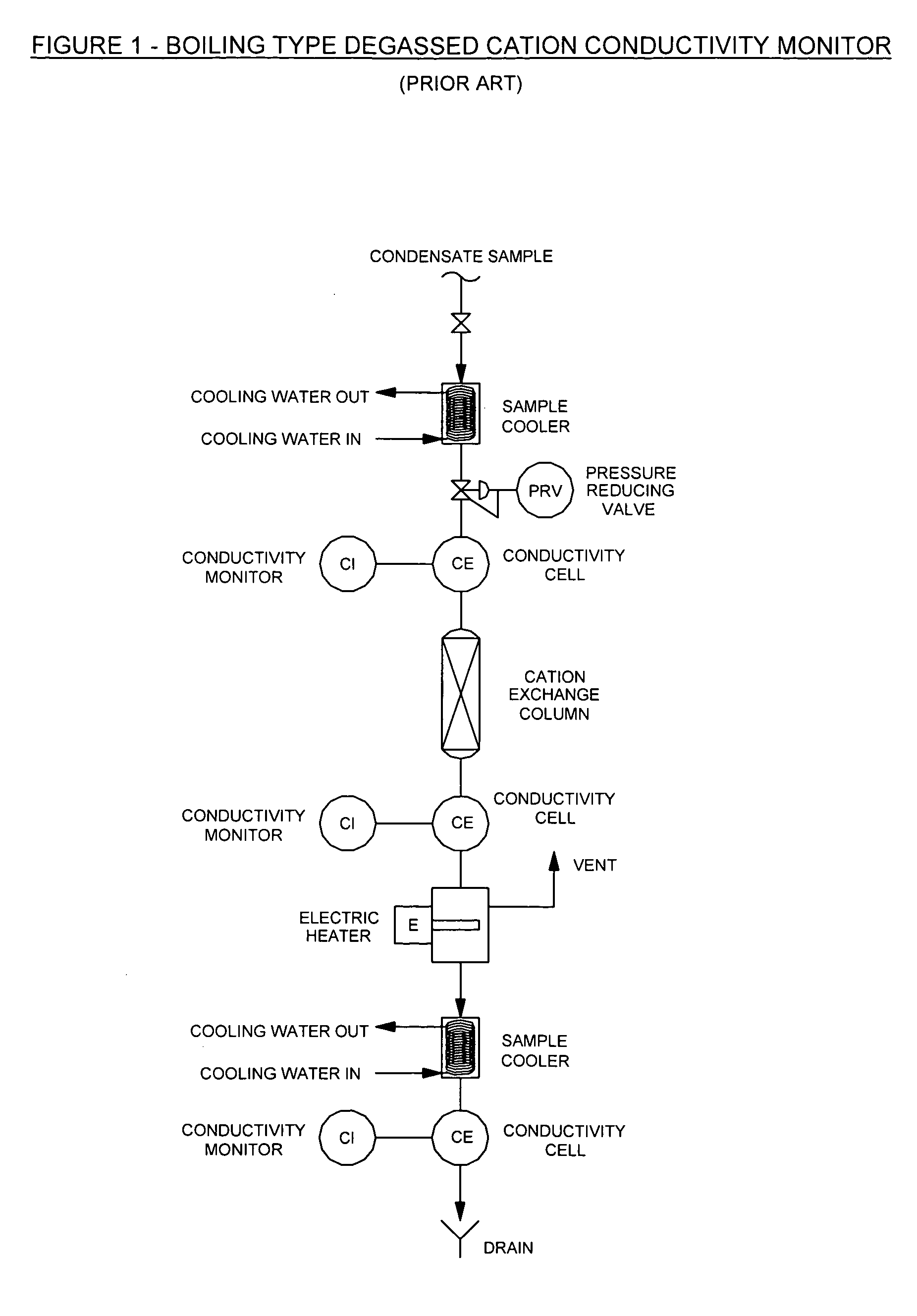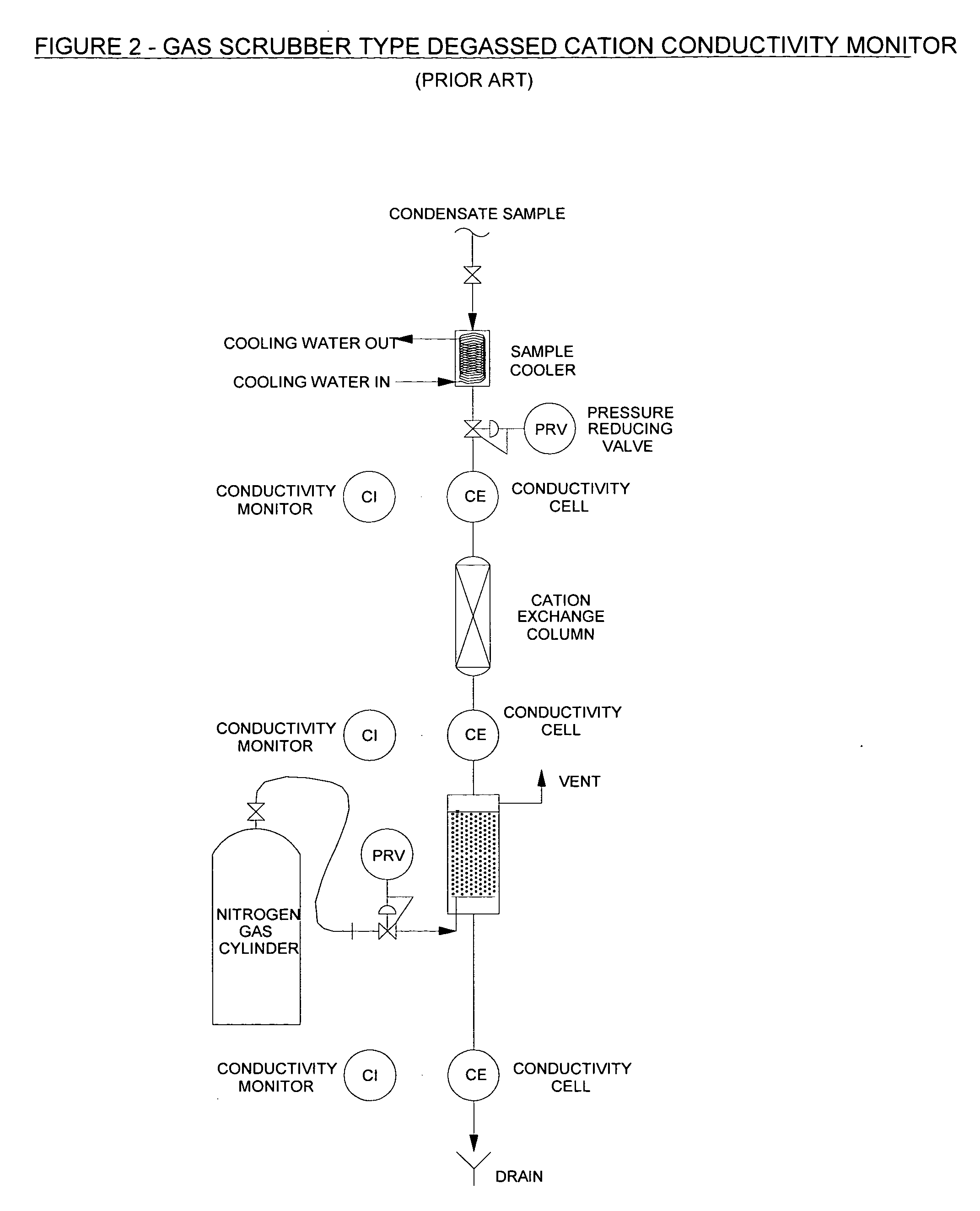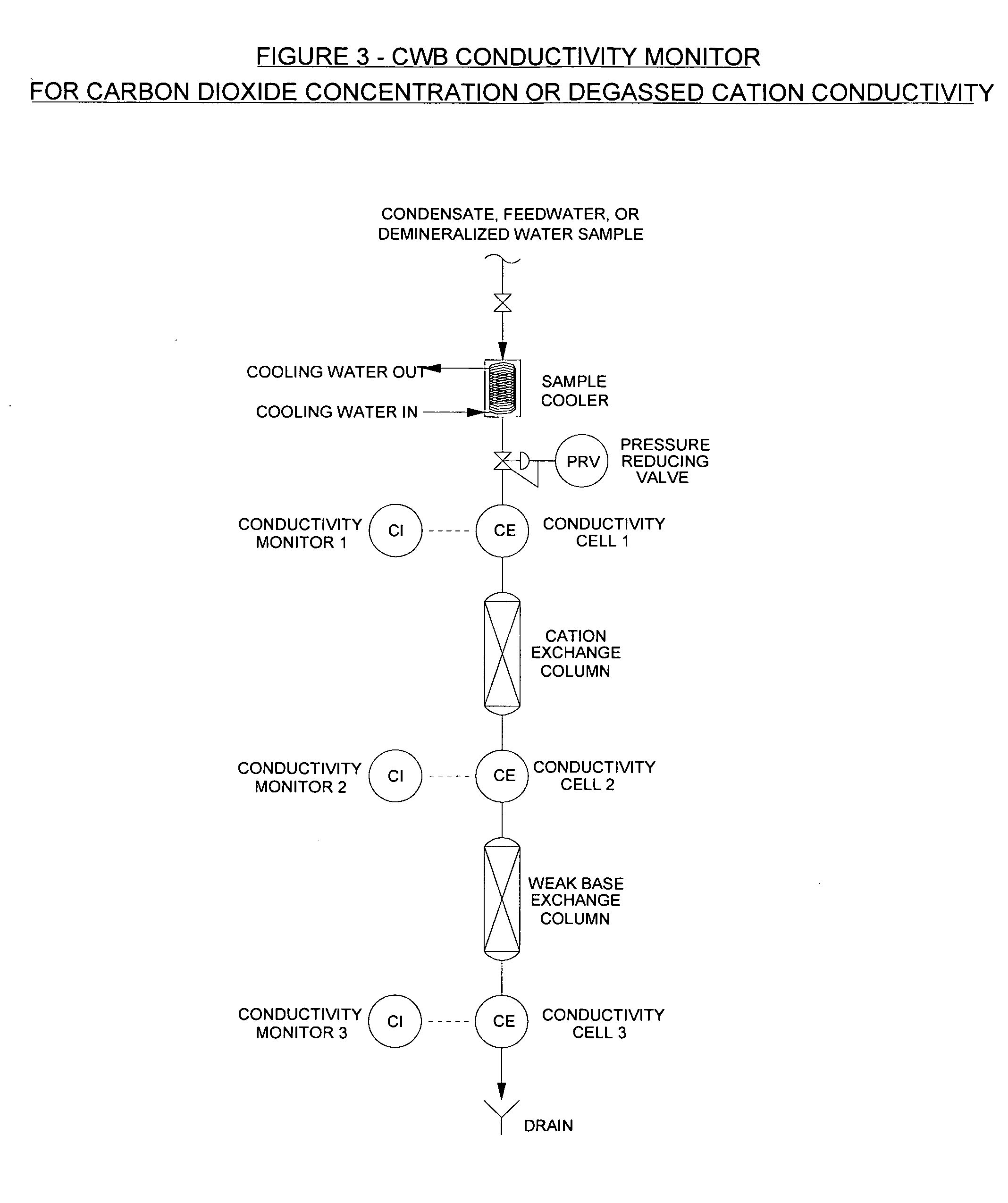CWB conductivity monitor
- Summary
- Abstract
- Description
- Claims
- Application Information
AI Technical Summary
Benefits of technology
Problems solved by technology
Method used
Image
Examples
Embodiment Construction
[0063]A preferred embodiment of this invention for monitoring the concentration of carbon dioxide and degassed cation conductivity is illustrated in FIG. 3.
[0064]The sample cooler, pressure reducing valve, conductivity cell 1 and conductivity monitor 1, cation exchange column, conductivity cell 2, and conductivity monitor 2 illustrate specific and cation conductivity apparatus in common use.
[0065]As shown on FIG. 3, the sample continues through a column of weak base anion exchange resin after passing through conductivity cell 2. The size of the column and the volume of weak base anion exchange resin in it can be approximately the same as the cation exchange column. The column can be constructed in the same way as cation exchange columns that are commonly used for cation conductivity apparatus.
[0066]As shown on FIG. 3, the sample then continues through conductivity cell 3.
[0067]Since the impurities that have a significant effect on conductivity (other than carbon dioxide) have essent...
PUM
 Login to View More
Login to View More Abstract
Description
Claims
Application Information
 Login to View More
Login to View More - R&D
- Intellectual Property
- Life Sciences
- Materials
- Tech Scout
- Unparalleled Data Quality
- Higher Quality Content
- 60% Fewer Hallucinations
Browse by: Latest US Patents, China's latest patents, Technical Efficacy Thesaurus, Application Domain, Technology Topic, Popular Technical Reports.
© 2025 PatSnap. All rights reserved.Legal|Privacy policy|Modern Slavery Act Transparency Statement|Sitemap|About US| Contact US: help@patsnap.com



